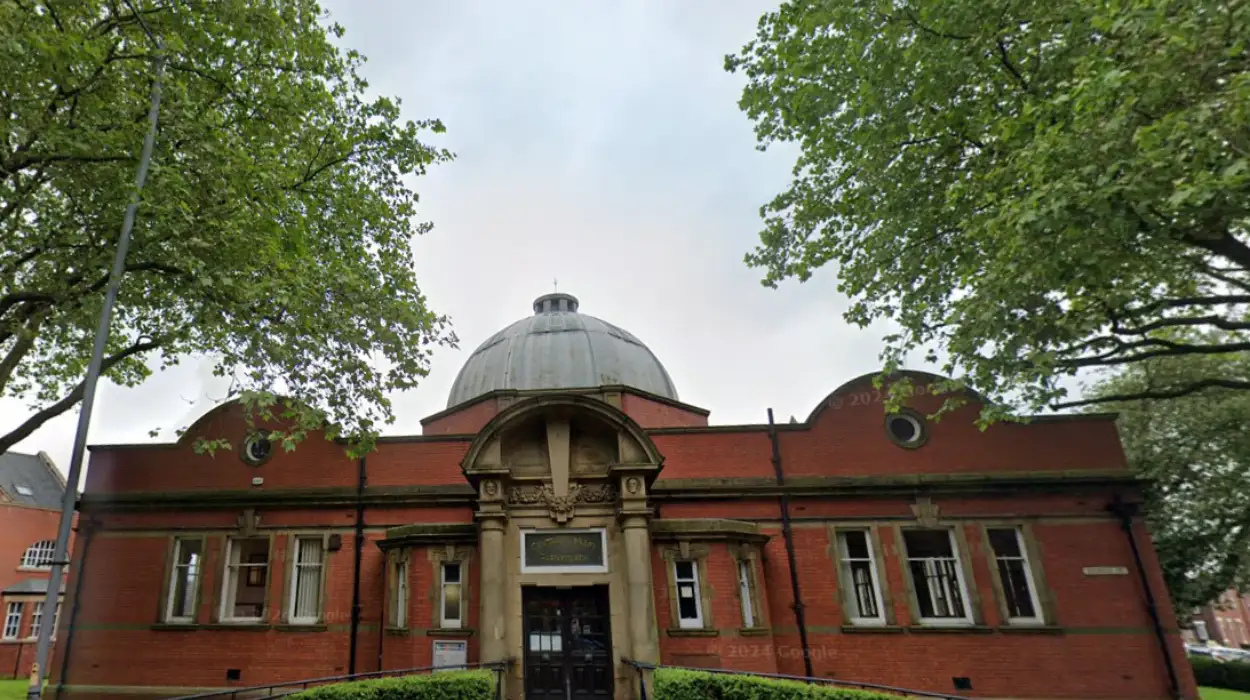Key Points
· Tramlines buried for decades have been uncovered during roadworks on Market Street, Farnworth.
· The tracks were found outside the historic Carnegie Farnworth library.
· Borough councillor Paul Sanders shared images of the exposed rails, sparking nostalgia and discussions on social media.
· The uncovered tramlines align with a 1930s painting by artist Ernie Holden, currently displayed in Farnworth library.
· Trams operated on routes from Bolton to Farnworth, Kearsley, and Clifton from the late 1800s until the 1940s.
· The tram system declined due to wartime bomb damage and wear, replaced by bus and trolleybus services.
· Local residents shared memories about horse troughs, stables, and tram routes extending through the town.
· Many expressed desires to reinstate trams in Farnworth.
· Greater Manchester mayor Andy Burnham announced plans for a tram-train linking Bolton, Farnworth, and Leigh to the Metrolink system, using tracks adaptable for both tram and rail travel.
What Happened to Farnworth’s Historic Tramlines?
As reported by The Bolton News, during road construction work on Market Street in Farnworth, contractors uncovered tramlines that had been hidden beneath the surface for decades. These tracks were located just outside the Carnegie Farnworth library, a significant historical site in the town centre. Borough councillor Paul Sanders captured and shared several photographs on social media, which instantly stirred a wave of nostalgia among the local community.
Councillor Sanders remarked, "The renovations on Market Street have briefly unveiled a portion of the historic tramlines and cobblestones." He added that although no photographs exist showing trams running specifically along this section, the late artist Ernie Holden depicted this scene in one of his celebrated 1930s paintings, which is currently on display at Farnworth library.
Who Operated the Trams, and When Did They Run?
Trams were a vital mode of public transport in Farnworth and the surrounding areas from the late 19th century through until the 1940s. The routes connected Bolton to Farnworth, Kearsley, and Clifton. These lines were operated by several companies, the major one being Bolton Corporation.
According to the Local Transport History website, tram services began as early as 1880, with construction promoted by Bolton Corporation starting then. The Farnworth tram system was part of a broader metropolitan tramway network.
Why Did the Trams Disappear?
The decline of Farnworth’s tram service was primarily caused by damage sustained during wartime bombings and the general wear and tear of the tracks. These factors led to the gradual replacement of tram services with buses and trolleybuses during the 1930s and 1940s, considered more efficient and adaptable at the time.
John Cartwright, a local resident, shared his memories: "I was born in Farnworth in 1928, and I remember the end of the trams, which gave way to the trolleybuses. I recall on Longcauseway, there were water troughs for horses; my granddad and uncle Ernie had stables just off Longcauseway behind the cinema." Margaret Gilmore also contributed, stating, "The tram lines extended up Brackley Street and Albert Road, reaching Longcauseway and along Buckley Lane to New Bury".
What Is the Public Reaction to Rediscovering the Tramlines?
The exposure of the tramlines triggered enthusiastic responses from the community. Many locals shared fond memories and voiced a wish to see trams return to Farnworth. The discussion around the discovery was vibrant, with many calling for a revival of the tramway to reconnect the town with its transport heritage.
Councillor Sanders’ images and the parallel with Ernie Holden’s art added historical and cultural significance to the findings, increasing public interest. The rediscovery was seen not just as a piece of transport history but also as a momentary unveiling of Farnworth's rich past.
Are There Any Future Plans to Bring Trams Back?
Yes. In June of this year, Andy Burnham, the Mayor of Greater Manchester, announced a proposal to introduce a tram-train system that would link Bolton, Farnworth, and Leigh to the Metrolink network.
These tram-trains are designed to operate both on traditional tram lines and existing railway tracks. This hybrid approach is considered crucial for expanding Metrolink services to outlying towns, including Farnworth. The initiative reflects a broader regional strategy to improve public transport and regenerate town centres, making them more accessible and connected.
How Does Farnworth’s Transport History Fit into Wider Regeneration Efforts?
Farnworth has been the focus of significant regeneration projects in recent years, drawing attention within Greater Manchester’s long-term development plans. As highlighted by Bolton Council, the town’s successful regeneration serves as a model for others in the region.
The Greater Manchester Strategy, launched officially in July 2025, includes ambitious plans to improve public transport infrastructure, increase housing, and boost economic vitality in Farnworth and surrounding areas. Projects such as the Farnworth Green development, public space improvements on Market Street, and upgraded leisure facilities have contributed to revitalising the community.
Bolton Council’s Leader, Councillor Nick Peel, noted, “Greater Manchester is leading the way on regeneration and in the reimagining of our town and city centres towards the right mix of housing, hospitality and retail. To see Farnworth highlighted as an example to follow is testament to the hard work that has gone into its ongoing transformation”.
What Is the Historical Significance of Farnworth’s Transport Network?
Farnworth’s transport history, including its tramway system, is emblematic of the industrial and urban development of towns in the Greater Manchester area across the late 19th and early 20th centuries.
The tramlines were integral in supporting commuting and local travel, linking residential areas with industrial and commercial centres. Their uncovering during the recent roadworks is a poignant reminder of the legacy infrastructure beneath modern developments.
The historical tram routes, as confirmed by local transport historians, crisscrossed through Farnworth and connected it intricately with neighbouring locales, reflecting the town’s once pivotal role in regional transport networks.
